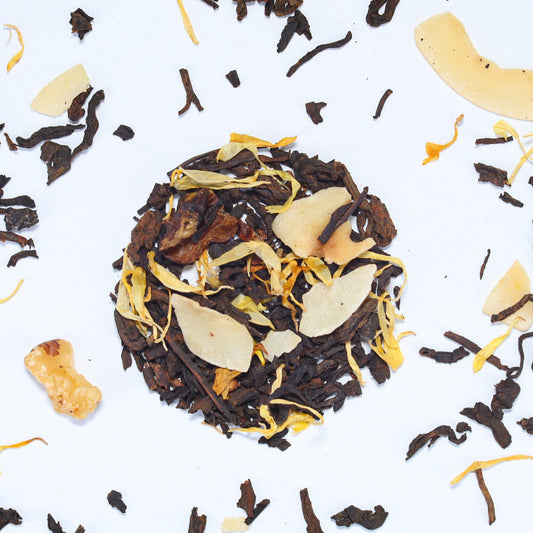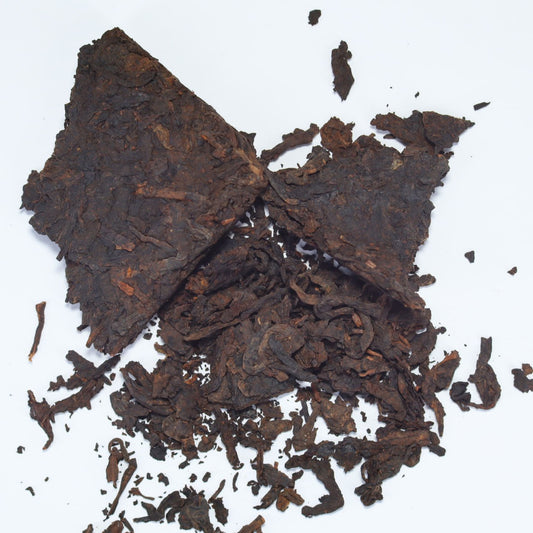What Is Pu-erh Tea — and Why Do People Age It Like Wine?
When you think of tea, you might imagine a fresh, fragrant brew made from newly harvested leaves. But then there’s Pu-erh tea, a unique and intriguing variety that’s often compared to wine due to its aging process and complex flavor profile. Unlike most teas, Pu-erh tea becomes more valuable and refined with age, much like a fine vintage.
So, what exactly is Pu-erh tea, and why do people age it? In this post, we’ll delve into the fascinating world of Pu-erh tea, exploring its origins, aging process, and why some tea enthusiasts treat it with the same reverence as wine.
What Is Pu-erh Tea?
Pu-erh tea originates from Pu’er, a city in the Yunnan Province of China, where the tea is produced using Camellia sinensis leaves. What makes Pu-erh unique among the wide range of teas is its fermentation process. Unlike traditional teas like black, green, or white, which undergo oxidation to varying degrees, Pu-erh is fermented and aged, resulting in distinctive flavors that evolve over time.
Pu-erh tea is divided into two main categories:
-
Sheng (Raw) Pu-erh: This is the traditional style of Pu-erh, which is made from fresh tea leaves and undergoes natural fermentation over time. Sheng Pu-erh is often bold, astringent, and slightly bitter when young, but it mellows and develops complex flavors as it ages.
-
Shou (Ripe) Pu-erh: This is a more modern version of Pu-erh that undergoes an accelerated fermentation process, designed to mimic the aging process of Sheng Pu-erh. Shou Pu-erh is rich, earthy, and smoother from the outset, making it more accessible to new Pu-erh drinkers.
The aging process is what truly distinguishes Pu-erh tea, transforming it into a unique beverage that improves with time. But why do people age it like wine? Let’s take a closer look.
The Aging Process: Why Age Pu-erh Tea?
Aging Pu-erh tea is an art form. Much like wine or cheese, tea leaves can undergo a transformation as they age, developing deeper, richer flavors and aromas. Here’s why this process works, and why it’s so highly prized by Pu-erh enthusiasts:
-
Fermentation and Microbial Activity: During the aging process, the tea leaves continue to ferment slowly, especially in Sheng Pu-erh. The natural microorganisms present in the tea continue to break down compounds in the leaves, changing their chemical composition. This microbial activity results in a range of flavors, from earthy and woody to sweet and floral. The longer the tea is aged, the more complex its flavors become, with notes of leather, honey, and even dried fruit.
-
Flavor Development: Freshly made Pu-erh tea, especially Sheng Pu-erh, tends to have a sharp, sometimes bitter taste with strong vegetal flavors. However, as it ages, it gradually mellows. The harshness fades, and in its place, richer, smoother, and more nuanced flavors develop. This is why aged Pu-erh is so highly sought after — it offers a layered drinking experience that evolves over time.
-
The Terroir Effect: Much like fine wine, Pu-erh’s aging process is influenced by its environment. The conditions under which the tea is stored—temperature, humidity, and even the surrounding air—can all impact the final flavor. Tea stored in a cool, dry place may age more slowly, while tea kept in a humid environment may develop faster, creating different flavor profiles. This gives each Pu-erh batch its own unique character, much like how a wine’s terroir can shape its taste.
The Value of Aged Pu-erh Tea
Aged Pu-erh tea can become incredibly valuable. Just as some wines can fetch thousands of dollars per bottle, so too can aged Pu-erh. The value of a Pu-erh tea is determined by several factors, including:
-
Age: The older the tea, the more expensive it typically is. Some aged Pu-erh teas from rare harvests can be worth hundreds or even thousands of dollars per cake.
-
Rarity: Pu-erh tea made from specific tea trees, especially ancient trees, can fetch a high price due to their limited availability.
-
Flavor: As Pu-erh ages, its flavors develop in complexity. Highly aged Pu-erh is often smoother, richer, and more aromatic, making it a sought-after treat for connoisseurs.
How to Age Pu-erh Tea
If you're interested in aging your own Pu-erh, the key is proper storage. While Pu-erh can be aged in various ways, here are a few tips to ensure the process goes smoothly:
-
Store in a Cool, Dry Place: Store your Pu-erh in a cool, dry location that is free from direct sunlight and strong odors. Ideally, the temperature should be between 60°F and 70°F (15°C to 21°C), with humidity levels around 60%.
-
Avoid Plastic Containers: Pu-erh tea needs to breathe in order to age properly. Store your tea in porous containers, such as ceramic or clay jars, or wrap it in breathable paper.
-
Patience: Just like wine, aging Pu-erh takes time. You may start to notice subtle changes in flavor after a few years, but true aging requires patience — Pu-erh may take a decade or more to fully reach its peak.
Drinking Aged Pu-erh
When you finally get your hands on a well-aged Pu-erh, the experience is unlike any other tea. The complexity of the flavors—ranging from deep earthy notes to hints of sweetness—provides a rich, satisfying experience. Some Pu-erh enthusiasts even enjoy experimenting with different brewing methods, using more tea leaves or longer steeping times to uncover the full depth of flavor.
Unlike most teas, Pu-erh can be steeped multiple times, with the flavors continuing to evolve with each infusion. This makes it an ideal tea for slow, contemplative sipping.
Conclusion: Pu-erh Tea, Aged to Perfection
Pu-erh tea is a unique and fascinating tea that deserves its reputation as the "wine of the tea world." The aging process not only transforms the tea’s flavors but also enhances its value, creating a luxurious experience for tea lovers. Whether you prefer the bold flavors of young Sheng Pu-erh or the smoother taste of aged varieties, there’s a world of complexity and depth to explore.
So, next time you sip a cup of Pu-erh, remember that it’s not just tea—it’s a living, breathing beverage that has been shaped by time, fermentation, and careful storage. Aging Pu-erh is a delicate process, but for those who appreciate the art of tea, it’s well worth the wait.
RELATED PRODUCTS
YOU MAY ALSO LIKE
Not all teas have the same caffeine kick. Green, black, oolong, and matcha all vary — and herbal teas are usually caffeine-free. This guide breaks it all down so you can sip smart, depending on the time of day or your energy needs.
Bonus: comparison chart vs. coffee.
Brewing tea with cold water isn’t just a summer trick — it actually changes the flavor profile. We explain the difference between hot and cold infusions, when to use each method, and how to cold brew like a pro at home.
Great for iced tea lovers and flavor explorers.
Light, air, moisture — the enemies of fresh tea. Learn how to store loose leaf, matcha, and even tea bags to preserve flavor and potency. We’ll also show you how to organize your tea stash for both beauty and function.
Includes: best containers, where to keep them, and mistakes to avoid.
Gongfu brewing is a beautiful, mindful Chinese tea tradition that turns steeping into ceremony. We explain what tools you need (like a gaiwan), how to do it, and why it enhances flavor and focus.
A guide for anyone who wants to deepen their tea practice.













